In November of 2012, I accidentally “created” a smoked Darjeeling.

I say “accidentally” and put arbitrary air-quotes over “created” because . . . that’s only kinda what happened. One fateful day, I put a sample of Risheehat first flush—enclosed in a do-it-yourself tea bag—into a tin of loose Lapsang Souchong. Totally not thinking of the consequences. A week or so later, I broke out the sample, brewed it up, and marveled at the light-but-lingering “campfire embers” taste.
That made me wonder if and when someone in Darjeeling proper would (or could) ever smoke a Darjeeling like that. Several years later, in the summer of 2016, I saw this. Tony Gebely from World of Tea posted a picture of a first flush Darjeeling . . . that had been smoked over oak.
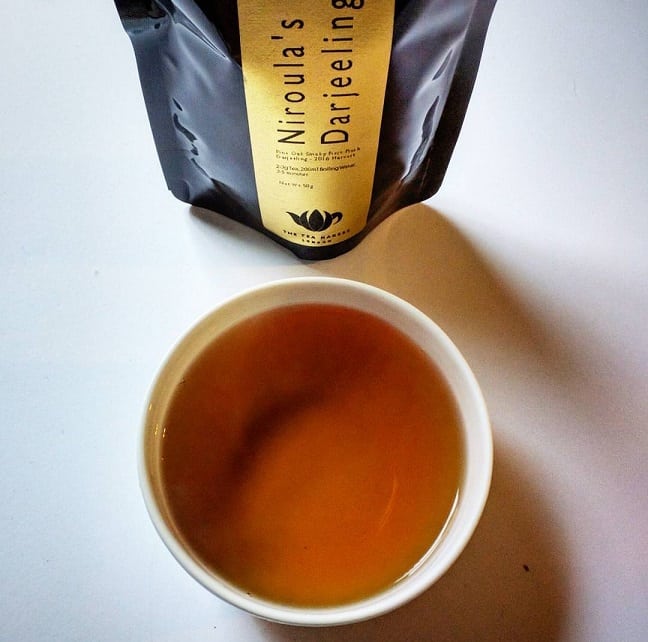
Image owned by Tony Gebely.
My jaw dropped. Apparently, it hailed from an “estate” called Niroula.
I say that in quotes as well because . . . well, I’ll get to that later. Tony took note of my fascination, and sent this new creation to me in a care package. Within minutes of opening the box, I brewed it up.
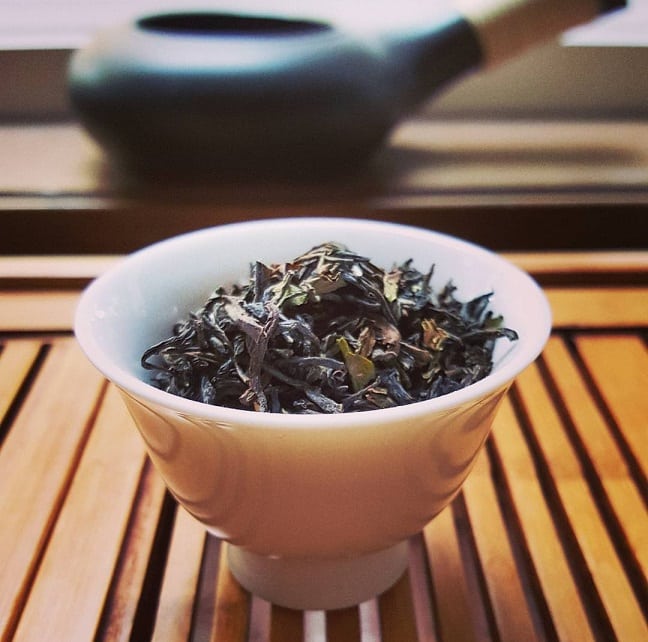
From what I recall, it possessed all the wonderful, spicy notes of a Darjeeling first flush, but with an extra . . . something. The smokiness didn’t overpower the palatial experience, but rather enhanced it. It was subtle yet omnipresent throughout the entire brew. Campfire embers again, I had thought.
Over the next couple of years, the name “Niroula” would show up every once in a while. Lochan Tea even sent me some Niroula samples in 2017—twice over. Of which I only opened and brewed one offering; the Autumn Delight.
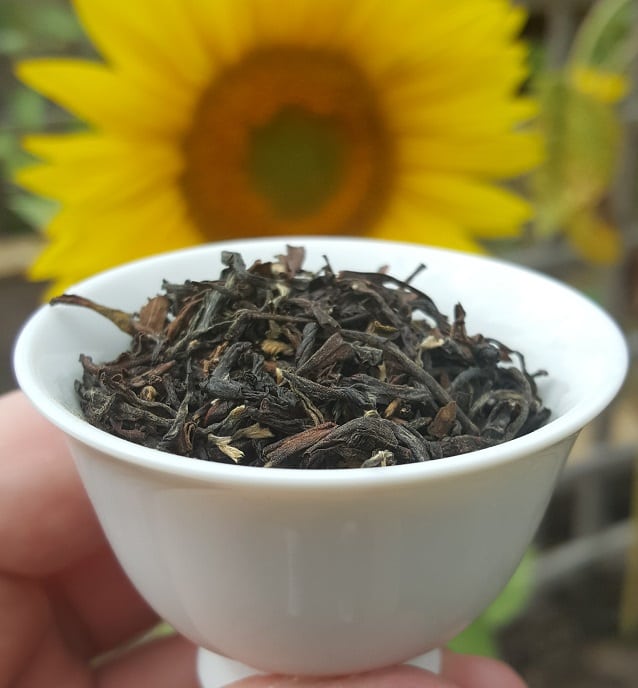
It was good, but I could hardly detect the smoke, if it was smoked at all. For some reason, I never wrote about that experience. Especially strange, because it was one of the first autumn flush Darjeelings I’d ever tried.
At World Tea Expo of this year (2018), Niroula came up again. This time, I was involved in a rather tea-nerdy conversation with Rajiv Lochan and another gentleman (whom I can’t remember) about the Niroula teas. That’s when both men dropped an interesting bombshell I hadn’t expected. I mentioned that I didn’t think the autumn flush Niroula was smoked, but both gents insisted that all the Niroula teas were smoked in some fashion or another. It was their signature style.
As if on cue, I received a couple of review sample invoices of this year’s Darjeelings from Rajiv’s son, Vivek. Just like in 2017, between the two packages, there were samples from Niroula for my perusal. And again, for some reason, I put them aside for another time. But then I saw this picture, posted by Rajiv.
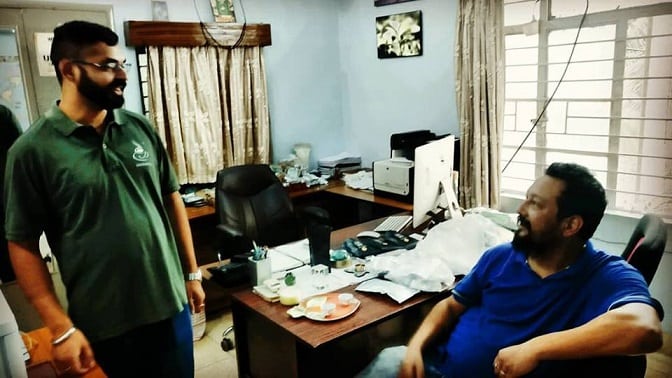
Left: Vivek Lochan. Right: Bhawesh Niroula. Image owned by Rajiv Lochan.
In the photo, Vivek Lochan was discussing something with another man. The Facebook caption by Rajiv mentioned and tagged a man named Bhawesh Niroula. And there was something different about him; something I couldn’t quite put my finger on. Finally, after two years, I decided to research this garden a little further . . . and I was captivated.
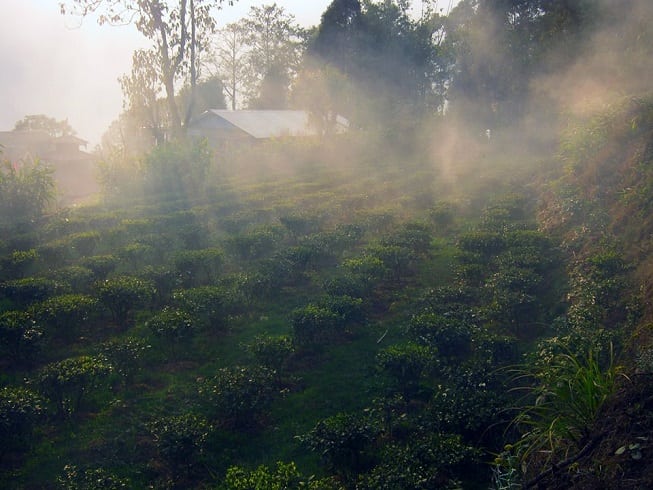
Image owned by Niroula’s Tea Farm.
Niroula’s Tea Farm wasn’t a typical Darjeeling tea estate by any stretch. In fact, it wasn’t even large enough to even take up a tenth of the average Darjeeling operation. The garden was considered a micro-lot, planted on the outskirts of the small village of Chota Poobong Busty—a settlement populated mostly by peoples of Ghorka descent.
The Niroula micro-farm was planted in 2000 by one Bikram Niroula—himself a Ghorka—and his original mission was to focus on organically farmed teas. In 2014, his son, Bhawesh, took over the operation, and expanded the ambition of the original plot. Instead of making teas solely from the micro-lot, he also sought to import leaf from other Ghorka smallholders in the area.
In my diggings, I even found a documentary produced for Open Atlas that explained this in further detail:
The factory Bhawesh spoke of was a small processing unit that not only made teas from the original Niroula plot, but also bought leaf material (at fair prices) from other small tea gardens nearby. Because the terroirs are so similar between the adjacent plots, and the growing/plucking standards are relatively uniform between all the gardens, it’s as if the leaf material comes from the same garden.
On further digging, I even found this video posted by Bhawesh himself, explaining his mission statement:
What makes the Niroula operation so unique is not the fact that it’s a smallholder farm or a bought-leaf factory, but rather that it is a locally owned outfit. Bhawesh is Ghorka, and he’s producing recognized Darjeeling teas. That’s kind of a big deal, and I’ll explain why. Trigger warning: politics and history.
The Ghorka inhabitants of the Darjeeling region aren’t originally from there. They were brought over by the British from Nepal, over a period of a hundred years or so, to work the newly planted tea fields. Before their arrival, Darjeeling was mainly populated by the indigenous Lepcha—who were too few (and too uninterested) in the labor-intensive process of picking tea. With good reason.
At present, 90% of all the Darjeeling tea estate labor force is predominately Ghorka. Pay is low, working conditions can be grueling. Plus, the tea plantation model hasn’t changed much since the British era. Granted, some changes are happening, but not at a rate that can be considered quick or sustainable. Because of the low pay and working conditions issue, political unrest has resulted—including the monumental strike of 2017.
In the interim, Ghorka owned and operated farms have cropped up here and there, some even producing their own teas by hand. However, their teas aren’t officially recognized as “Darjeeling” teas because they aren’t recognized by the Tea Board of India. That’s where Niroula’s operation differs. Not only are the teas produced by Niroula’s Tea Farm considered Darjeeling teas officially, but it is the first Ghorka-owned operation to be considered so.
So, where does the “smoked Darjeeling” signature style aspect come into play?
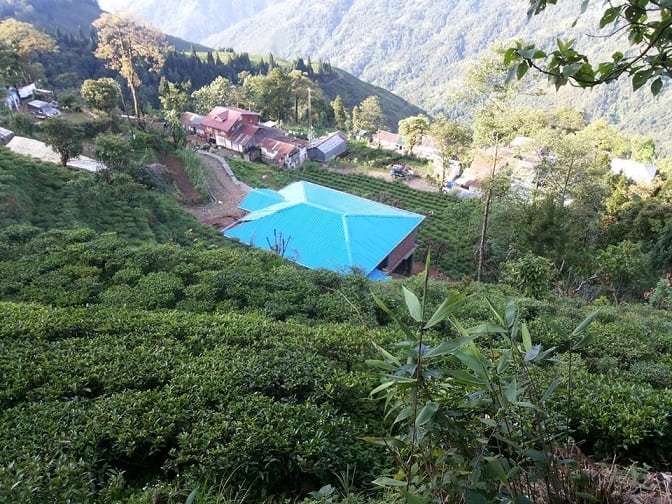
Image owned by Niroula’s Tea Farm.
Well, the way I heard it, in the first year they were getting the factory up and running, they possessed a malfunctioning heater. I’m not sure how or why, but that led them to consider other alternatives for oxidizing their teas. Much like that old Chinese legend about Lapsang Souchong, Niroula turned to oak-smoking their teas. Lightly, though, and over a longer period of time; the result lent to what became Niroula’s signature stamp on their product—a gentle, smoky imprint.
After learning all that, I had no choice. I finally had to explore these teas in more detail. Lochan Tea had sent me both a first flush and second flush to play with. A few weeks ago, I did so.
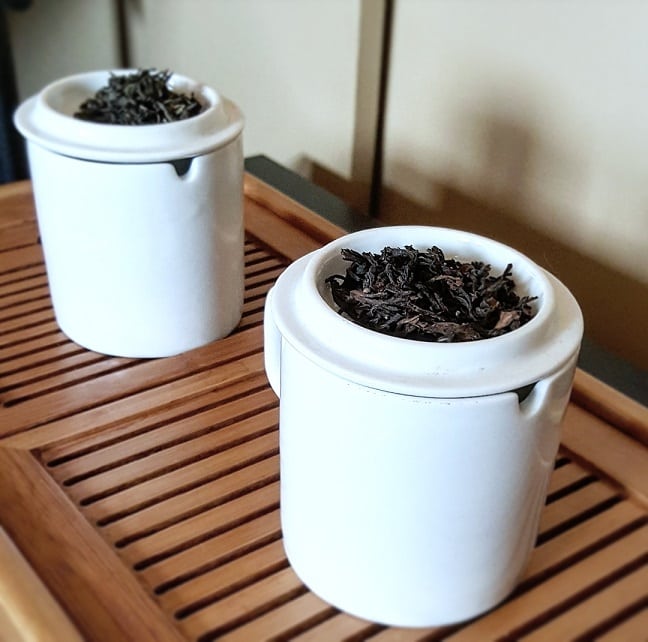
Both the first and second flush had similar aromatic profiles. Subtle smokiness came through on first whiff, followed by whatever the requisite traits were for that seasonal harvest. The first flush was smoky, spicy and floral; whereas the second flush adhered to muscatel . . . with smokiness. Like a vineyard on fire, while passersby ate fragrant sweet bread.
The biggest difference lay in the leafy visual presentation. The leaf cuts differed, as did their respective colorings, but not as much as one would think. Usually, Darjeeling first flushes appeared far greener than second flushes. This was mainly due to gardens cutting the oxidation off at around 50-60% before industrial head-drying. A technique developed to bring out more of the natural leaf aromatics. Niroula’s first flush Smoked Delight . . . did not adhere to this standard.
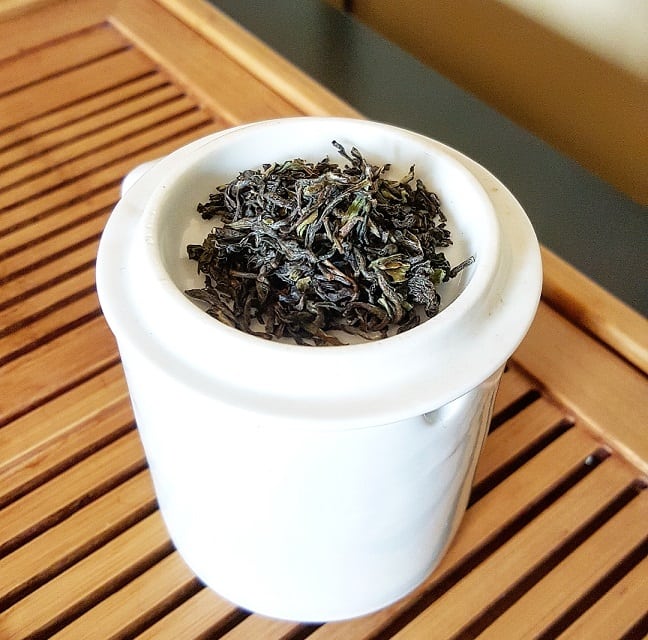
Sure, the leaves had a greener appearance overall, but they couldn’t be mistaken for a green tea on first impression. Sure, there were some green pieces in the fray, but for the most part, they were second flush brown. The leaf cut also differed in that the leaves were smaller than the average first flush. BOP-ish, sure, but about two-thirds the usual length after rolling.
The second flush Smoked Wonder followed more closely to the standard cut of its type. The leaves were dark red-to-brown, twisty, and had the standard BOP cut to them. But they also looked a little more intact, and the smell they gave off . . . oh my. The smokiness and muscatel they gave off—on closer inspection— melded to perfection. As mentioned above, there was that whole “vineyard-on-fire” first impression, but a closer, deeper sniff revealed much more.
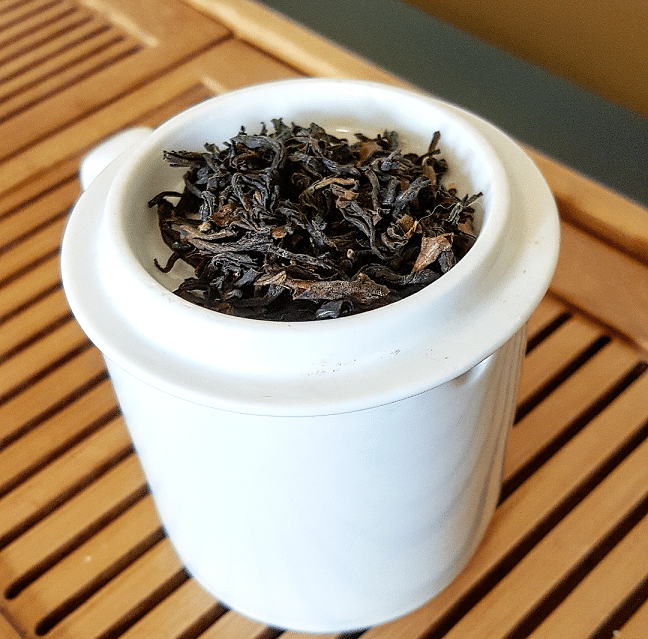
My first thought was, Tobacco. No, not an “ashtray” scent; fresh cut tobacco—strips of it. The natural muscatel profile accentuated this.
For brewing: I put a heaping teaspoon of leaves of each in 5oz. steeper cups, used water just under a boil, and subjected both to a three-minute steep.
The first flush brewed a beautiful, sparkly, medium amber with an aroma of roasted chestnuts and wild flowers. A mild haze of hickory permeated throughout the scent, ushering in the desire for a sip. And succumb, I did! A small tickle of astringency accompanied the smooth delivery of subtle notes like charred wood. It further opened up to reveal more floral characteristics, but they were delightfully tempered by this sensation of . . . “living room fireplace”. And on the finish, something akin to that peat moss note whiskey drinkers like, but a mere echo instead of a gut-punch.
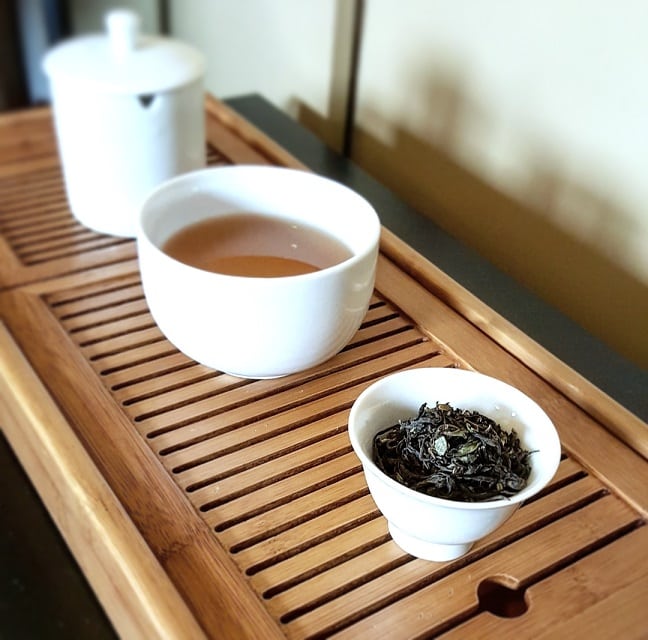
On the other hand, the second flush brewed bold copper. Not nearly as soft a red palette as some other second flushes, more like an Assam. Aromatics were more akin to a Chinese black than an Indian one; wood-sweetness carried over in the steam like a fine Keemun.
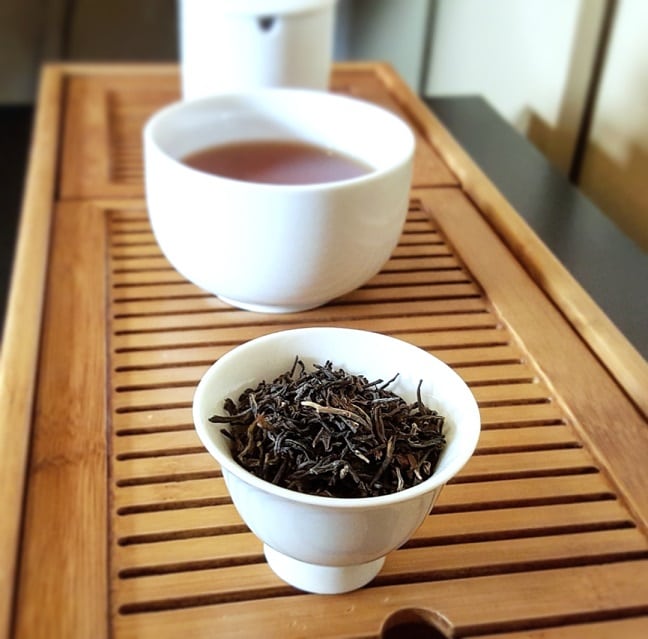
On taste, the Keemun lean continued into the introductory sip, but that soon gave way to a toasty something that reminded me of the faint ambers of a well-hued cigar. Notes of charred wine oak dominated the top note. My mind immediately went to Italy, and imagined what the inside of a Sangiovese barrel tasted like. Yes . . . I pictured myself licking a wine cask while drinking this. Don’t judge me.
I’m not sure I have a favorite of these two; both embodied their seasonal plucks perfectly.
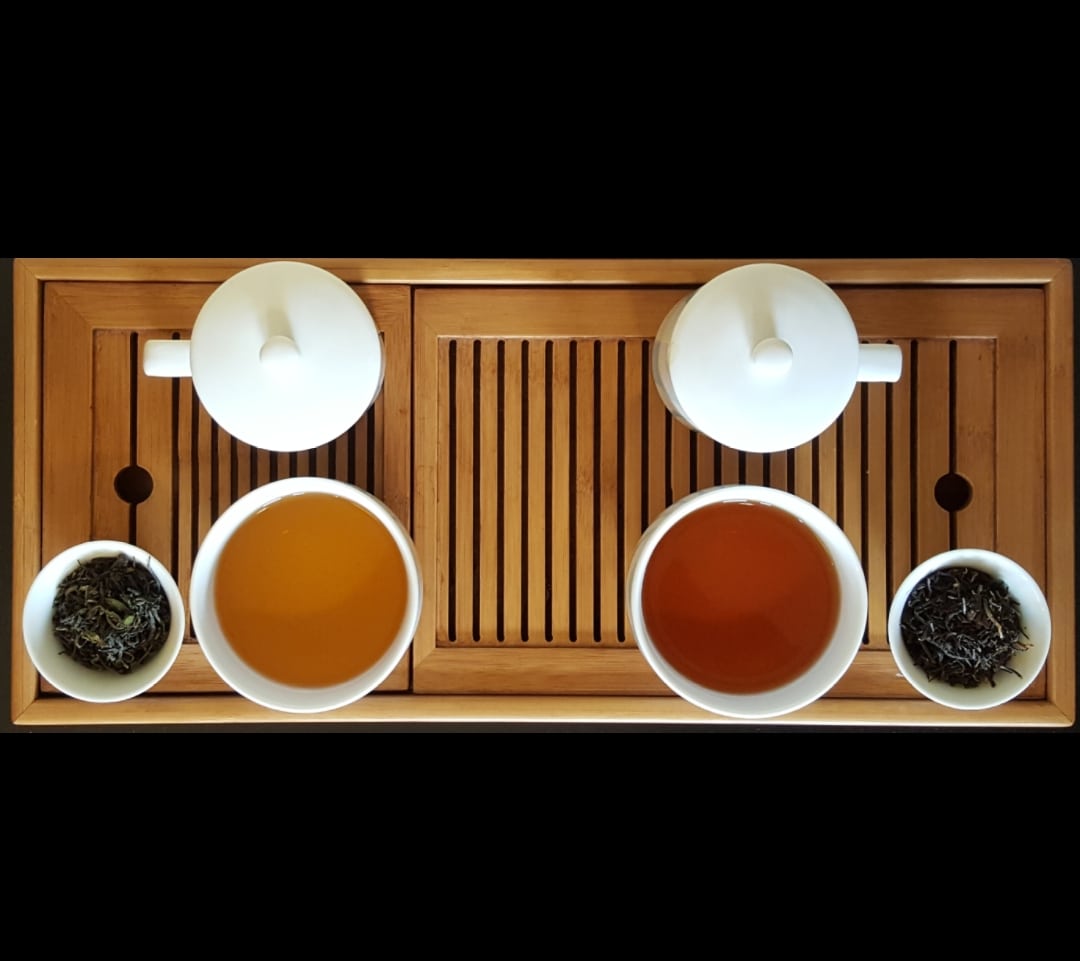
And the added benefit of the subtle smokiness gave a sense of depth to both brews. So endearing is that sensation that I’ve revisited on multiple occasions. Both teas put up with brews far exceeding the normal infusion time. Something in the processing prevents them from getting too astringent or bitter if subjected to a longer steep. If anything, the smoky aspects become more pronounced, but still maintain that gentle delivery.
I even revisited the autumn flushes I received and came to similar conclusions.
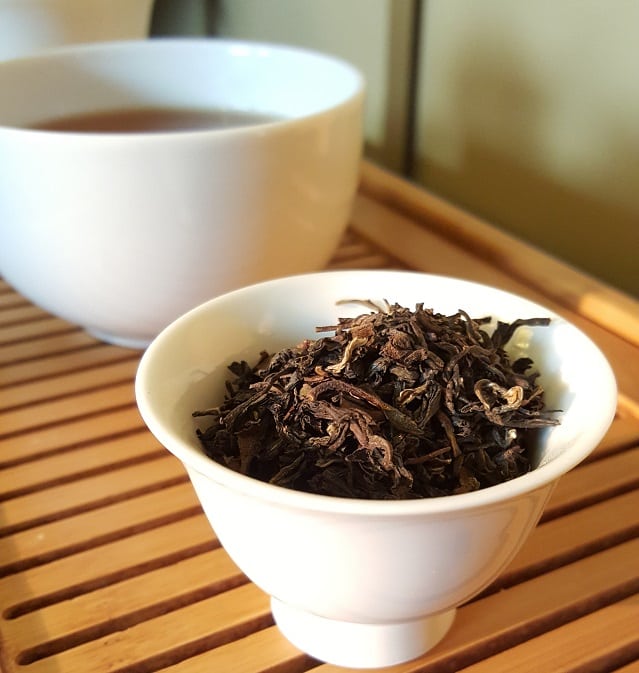
Niroula’s Tea Farm and processing unit is a pioneer and paradigm shift in what Darjeeling tea is . . . and a look at what it could become. As tea leaves change over the course of seasons, so do the faces of those who master their potential. I look forward to tasting that future.
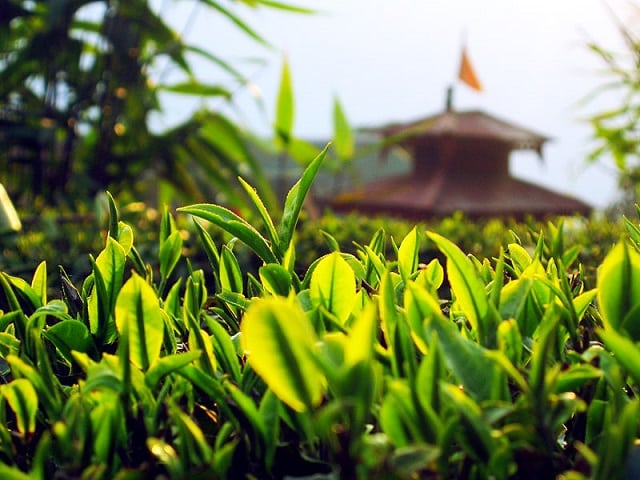
Image owned by Niroula’s Tea Farm.
To by Niroula’s Smoked Wonder, go HERE.

Xavier
It reminds me (but not with the ethical goal behind this factory) of how Champagne producers are working: some make their own Champagne wine and others (the big names usually) are just putting together wine grapes made by others.